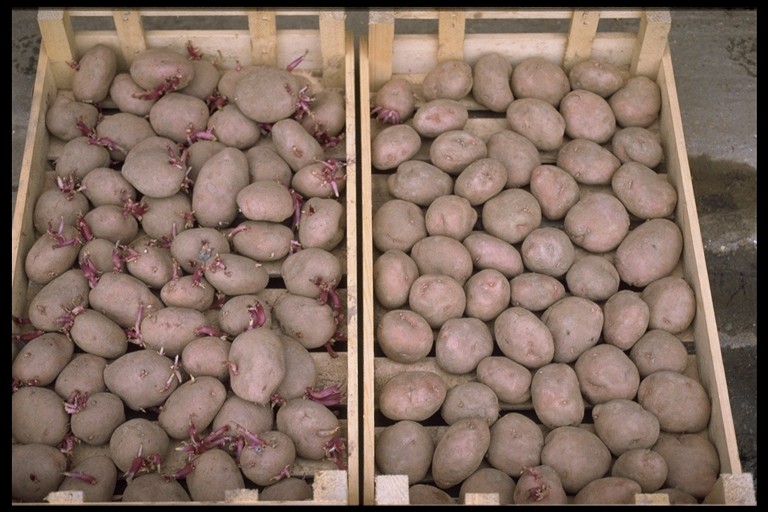
Following two summers where growers had to be particularly careful when applying Fazor in potatoes, this year is presenting growers with ideal conditions to apply this product to control volunteers and reduce sprouting in store, according to potato specialist for Hutchinsons, Darryl Shailes.
"Although some has already been applied, there is plenty of opportunity to use Fazor (maleic hydrazide) in the later planted processing crops. Growers are looking to use this product not just to reduce volunteer potatoes in subsequent crops, but also to suppress sprouting in store. If potatoes are stored between 9-10°C it’s my experience that Fazor will certainly help minimise sprouting right up until Christmas and, with the current issues of CIPC and its MRL’s, this will be definite benefit," he says.
When it comes to optimising the timing of Fazor, Darryl advises growers to make sure that the crop is actively growing and the haulm is mostly green, but with a few of the lower leaves turning yellow and most of the flowers having fallen. He also indicates that the crop should not be stressed by drought, pests, diseases or high temperatures.
"Growers should calculate back at least three and not more than five weeks from their intended burn down date. This allows the chemical sufficient time to be taken up by the leaves and translocated to the tubers where it acts. The optimum timing is five weeks before harvest."
Each field needs to be checked for maturity and tuber size, using test digs and a Fazorometer. The smallest tubers required to reach marketable size should be greater than 25 mm across. If too many tubers are going through the 25mm riddle, it is worth waiting and re-sampling, Darryl advises.
Darryl would also advise the use of appropriate water volumes of 350-500 litres/hectare, to ensure good coverage and penetration of the haulm and to maximise uptake of the product into the plant. "You should avoid periods where heavy rain is expected or when the temperatures are high, greater than 26°C. Ideally Fazor should be applied on its own."
"A foliar application of Fazor in second earlies and maincrop potatoes reduces the viability of small daughter tubers and thus suppresses volunteers developing in the field after harvest. When applied at the right time and under the right conditions, data shows that Fazor will give 75% control or more of potato volunteers in following crops as well as inhibiting sprouting in store," says Andy Leader, Principal Biologist for Dow AgroSciences.
Andy points out that Fazor is included in the Assured Produce protocols. It is recommended that growers check with their processor or packer before making an application.
Fazor contains 60% w/w maleic hydrazide, formulated as a water-soluble granule. It is recommended on second earlies and maincrop potatoes (but not on seed or first earlies) as well as bulb onions. In potatoes, Fazor is recommended at a dose rate of 5 kg/ha in 350-500 litres of water. It should be applied to actively growing foliage, typically around 3 to 5 weeks before burn down. It has a maximum number of treatments of one per crop and a latest time of application of 3 weeks before harvest. It is packed in a 2.5 kg bag. Fazor is fully approved for use on bulb onions and also has a specific off-label approval for use in garlic, shallots, carrots and parsnips.
